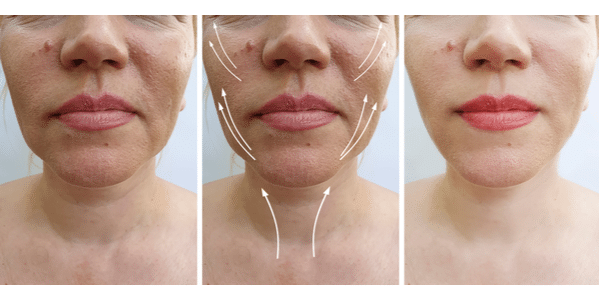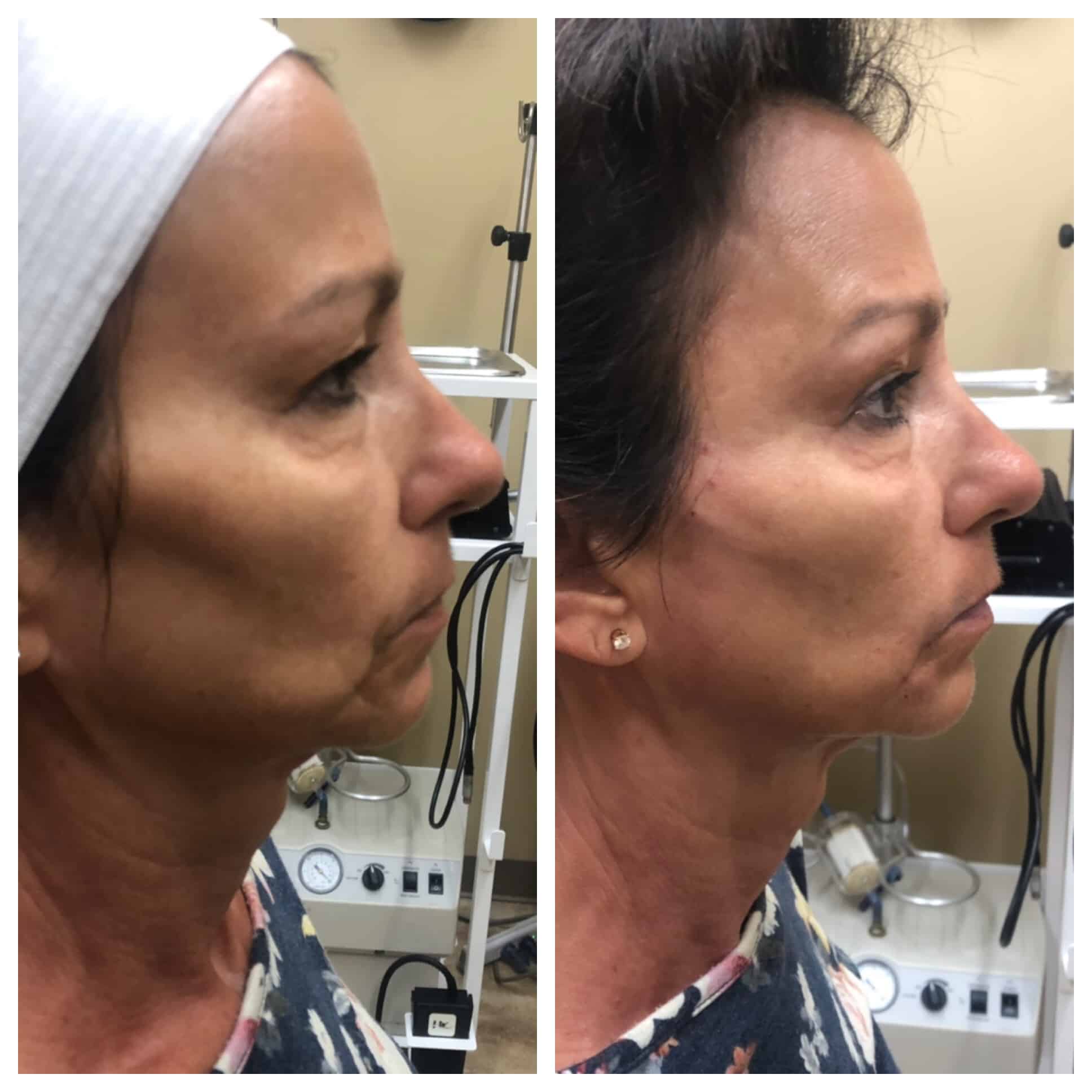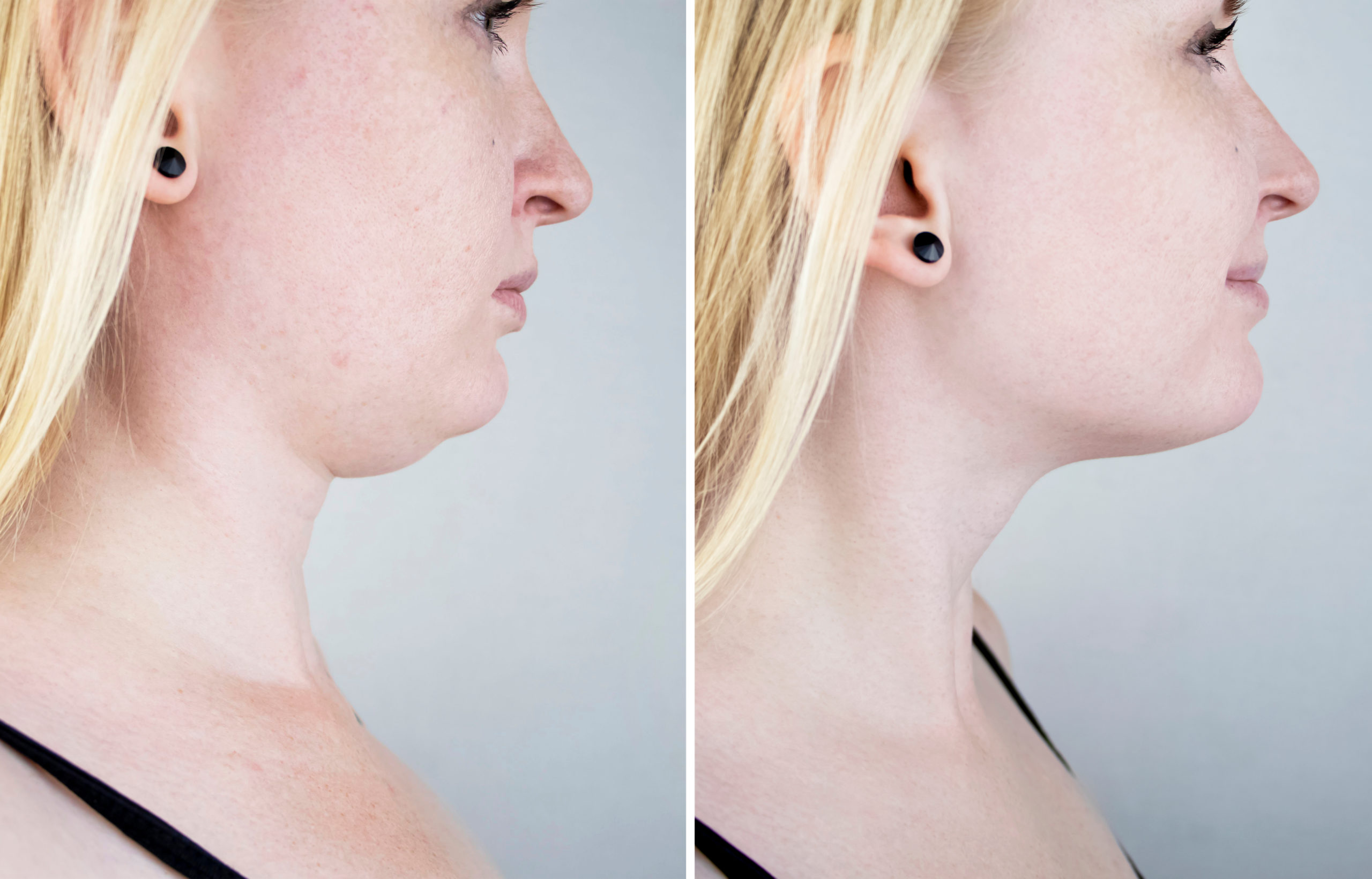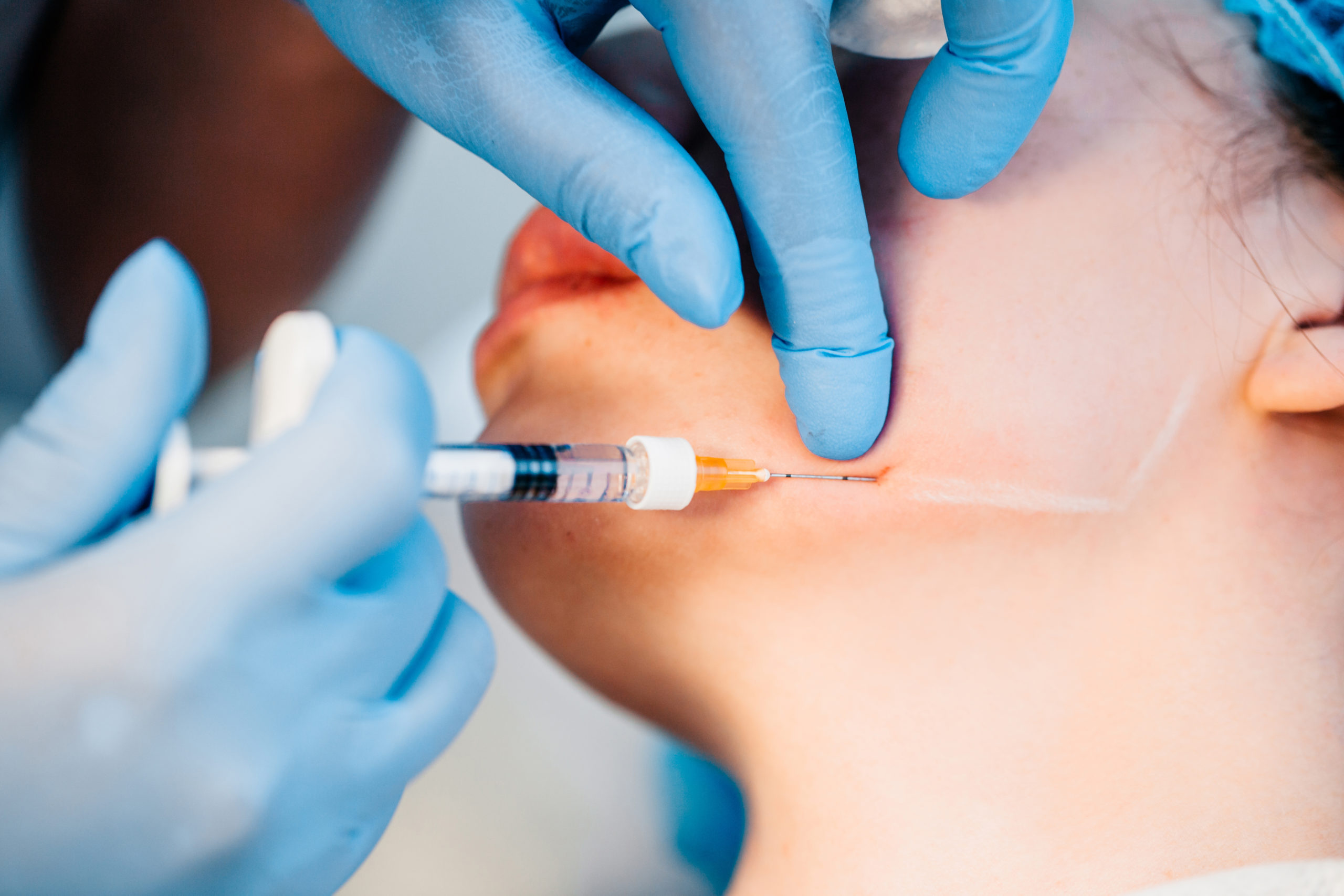The world of cosmetic services is constantly changing and offering new ways to enhance and highlight our natural appearance, and one treatment option that has become increasingly popular is focused on the jawline. Using facial fillers on the jaw and jowls can help patients improve the structure of the lower face, increase the definition of the jawline, give a lift to the upper neck area, and reduce the prominence of jowls.

When treating the jaw and jowl area with facial fillers, we’re referencing two different parts of the face, though connected. The jaw area is the lower part of the head, starting at just below the templates and ending at the chin, while the jowls are the fleshy part of the lower cheeks and lower jaw.

Jawline contouring is a popular procedure for slimming the jawline and creating a more balanced facial profile. Over time, aging can impact the elasticity of the jawline and create jowls. A sagging jawline can add age to someone’s appearance and also impact the balance of the face. Jawline contour using injections is popular for men and women who want to create a more defined jawline. Facial fillers in these areas are often used to strengthen the jawline, improve the appearance of a “double chin”, define and add sharpness to the jawline, or provide greater facial symmetry in this area. A lax jawline causes the skin in the center of the face to loosen and sag, while a firm jawline helps some look fit and confident.
Using dermal fillers in this area can provide a rejuvenated, youthful appearance, increase the sharpness of the jawline, and address patient concerns of sagging skin in this area, which commonly occurs over time and with age. Dermal fillers are a great way to address areas of the face that are affected by regular, repeated movements that cause “dynamic” or “fine” lines over time. As these specific muscles move over time, they lose more and more of their natural collagen and elasticity, resulting in loose, sagging skin in the affected areas. In fact, as one area on the face continues to age, it can have effects on other areas of the face as well. Overall, the loss of volume in one area of the face inevitably causes the loss of volume across the entire face.
For example, a loss of volume in the upper face, a completely natural phenomenon, leads to sagging in the lower two-thirds. This can lead to wrinkles and deep facial grooves, which give an impression of fatigue or premature aging. Then, as our lower face ages and loses volume and we experience the sagging appearance, this also causes sagging in the areas below – namely the upper neck and jaw. Dermal fillers are a great way to quickly and easily address this natural process, by replacing the lost volume, lost firmness, and/or lost sharpness in the jawline area and return sharpness to it for a period of time. This domino effect is one reason fillers and botox can also be used as preventative measures for younger patients who have not yet experienced facial volume loss.
What Caused My Jowls or Weaker Jaw Line?
This is a tough question that may not have just one answer! Jowls are caused by the combination of the fat compartment in the midface sliding downwards and skin laxity, causing a loss of definition in the jawline, chin, and neck area. This is generally an area of concern for the appearance of many men and women as they age. In the aging process, a combined series of internal, genetic factors, plus external and environmental circumstances, such as smoking, weight gain or weight loss, excessive exposure to sunlight, and even the use of certain medications can all contribute to the changing appearance of our lower face.
And what about younger patients? Well, aging is not the only factor in relaxed jawlines or the appearance of jowls. Some patients begin seeing this at a young age. While some people have a small, naturally weaker jawbone or chine and see the changing appearance more quickly, others may not lose volume as early or at all. It all depends on our genes and our environments, which over time cause us to lose bone mass in our skulls, deflate our cheeks and drop fat and tissue lower down the face and cheeks. The distribution of weight after weight gain can also affect each person differently, and for those with weaker jawlines, the increased weight may not have the support from their bone structure that others do, resulting in the appearance of jowls or sagging lower facial and neck skin. This is another reason why we see both male and female patients, and people of all ages – there is not simply one cause or one age in which patients see jowls appear.
How do fillers work in treating unwanted jowls and a sagging jawline?
Perhaps one of the best aspects of using facial fillers to address cosmetic concerns is that the process is quick, easy, and results can be seen nearly right away. After you complete the initial consultation and get a plan together with your provider, they will numb the treatment area, and then inject small amounts of filler in and around the chin, as well as along the jawline. As this is done, the filler immediately begins to restore volume to the area. The added volume fills and lifts the skin and surrounding tissue, which acts to provide a tighter, leaner, and sharper appearance. The lift in the treatment area’s skin and tissue then add definition to the jawline and neck, providing a more youthful and fresh appearance.
Well-defined jawlines can also help provide symmetry to the face that may have been lost over time due to the volume loss. For some patients, as their skin sags, it may not do so equally, which results in skin folds and sagginness in some areas, while less so in others. If applied properly, facial and dermal fillers can address this concern as well, and provide patients with facial symmetry in addition to a greater definition.
There are different expected results for jawline contour in men and women. While men might want a more chiseled look that can increase masculinity, women might prefer a soft but defined jawline that does not create a “square face”.
How Long Will My Jawline Contouring Last?
While jaw and jowl facial fillers aren’t permanent, they do offer quite a long time of reprieve, and then fillers can be added again! Most patients can expect the filler and jawline contour to last for at least one year, and sometimes as long as two years. However, more often than not, patients prefer to set regular appointments every 6 to 8 months to add additional filler “here or there”, as a more preventative measure. At a minimum, we recommend patients wait at least 12 weeks before seeking another filler treatment in order to allow the body time to heal and get used to the fillers. Facial and dermal fillers are broken down in the body over time, so even though results can last for a year or two, the effects gradually decrease, and most patients prefer to keep the fresh definition for as long as possible.
Do Facial Fillers to My Jaws or Jowls Hurt?
The needles used to administer dermal and facial fillers are extremely small and super-fine, so most facial treatments have very little discomfort. Even better news, the jawline area, and jowls tend to be one of the less sensitive areas of the face, so this procedure tends to have even less discomfort than other facial filler treatments. Most fillers will typically either have a built-in anesthetic or the treatment includes a topic numbing cream, so we work to make sure our patients are as comfortable as possible and feel little to no pain. There may be some discomfort or a slight “pinching” feeling as we inject the filler, but overall the procedure is quick and easy. Patients on average need about six injections per treatment, but this is highly variable and will be determined in your initial consultation with our team.
After the injection and over the new few days, a small amount of bruising and swelling are the most common side effects with any facial filler, and patients should ice the area after their appointment and generally take it easy for the next day. Soreness is normal, but patients do not feel extreme pain or discomfort during their appointment or after, and can always speak with their provider to discuss taking a light pain reliever as needed. We’re here to answer any questions you might have, and look forward to helping you achieve your perfect results!




